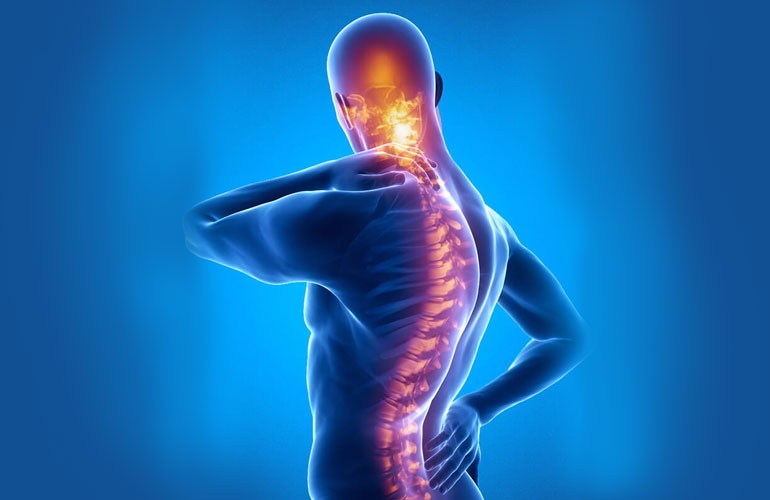
Understanding the Science of Pain: Modern Insights and Treatments
Although everyone experiences pain, there is still much to learn about the intricacy of pain and the science that underlies it. With the integration of knowledge from neuroscience, psychology, and medicine, our understanding of pain has undergone substantial change in recent years. The science of pain is examined in this article with an emphasis on contemporary theories, available therapies, and prospects for future research.
The Character of Pain
Pain is a complex experience with sensory, emotional, and cognitive aspects. It is not just a physical sensation. Fundamentally, pain serves as the body’s warning system about impending danger. Nociceptor nerve cells—specialized nerve cells that identify tissue damage or prospective tissue harm—are a part of this system. Nociceptor activation triggers the transmission of impulses from the spinal cord to the brain, whereupon the brain processes and interprets them as pain.
The Painful Neurological Pathway
There are multiple phases and a convoluted process leading to pain. Initially, nociceptors recognize stimuli that could be damaging and send signals to the spinal cord via peripheral nerves. These signals can be altered in the spinal cord before being transmitted to the brain. The thalamus, which transmits sensory data, and the somatosensory cortex, which maps the location and degree of pain, are two of the brain’s regions involved in processing pain. The limbic system, which controls emotions, also contributes to the emotional component of pain.
Scientists can now see these processes in real time because of recent developments in neuroimaging techniques, which have increased our understanding of how pain is experienced and processed. Pain is shown to affect a network of brain regions using functional magnetic
resonance imaging (fMRI) and positron emission tomography (PET) scans, indicating that pain is a distributed phenomenon rather than a single location.
Pain: Acute versus Chronic
There are two sorts of pain: acute and chronic. Acute pain is a warning sign that usually goes away when the underlying cause is taken care of. For instance, burn or cut pain goes away when the wound heals. On the other hand, chronic pain lasts longer than anticipated and may not go away once the underlying cause has been addressed. This kind of discomfort is frequently linked to ailments including neuropathy, fibromyalgia, and arthritis.
The reason chronic pain is so difficult to treat is that it can develop into a disease in and of itself, changing neuronal connections and fundamentally changing the structure and function of the brain. Over time, this may result in an increased sensitivity to pain and a decreased capacity to manage it.
Contemporary Pain Management
Historically, pharmaceuticals such as opioids, non-steroidal anti-inflammatory drugs (NSAIDs), and analgesics have been used to manage pain. Though sometimes successful, these therapies frequently have negative consequences and carry the danger of dependency, especially when it comes to opioids. Consequently, complementary and alternative methods of pain management have gained more attention.
Physical Therapy:
With exercises and methods that can reduce pain and stop it from coming back, physical therapy aims to increase strength and mobility. It helps patients restore function and movement and is especially helpful for musculoskeletal discomfort.
Cognitive behavioral therapy (CBT):
CBT helps patients modify unfavorable thought patterns and coping mechanisms in order to address the psychological aspects of pain. Studies demonstrate that CBT can enhance quality of life and lessen pain perception.
Acupuncture:
In order to promote healing and reduce pain, acupuncture involves carefully placing tiny needles into particular body spots. It is thought that acupuncture affects the nerve system and releases endogenous painkillers, though the precise mechanism is not entirely understood.
Neuro stimulation:
Methods that regulate pain signals by using electrical impulses or magnetic fields include spinal cord stimulation and transcranial magnetic stimulation (TMS). When traditional treatments are ineffective for chronic pain issues, these techniques are especially helpful.
Biological Therapies:
Targeted therapies, such as biologic medicines that can modify particular pain circuits, are the result of recent developments in molecular biology. These therapies try to target the underlying biological causes of pain.
Prospective Courses
A more individualized approach to pain management, fueled by advancements in neurology, genetics, and technology, is what the future holds. Tailored medicines are being developed as a result of research into how genetic variations impact pain perception and treatment response. Furthermore, advancements in machine learning and artificial intelligence may improve the capacity to forecast pain patterns and results, resulting in more efficient and customized treatment regimens.
In conclusion, a thorough examination of the neurological, psychological, and physiological components of pain is necessary to comprehend the science behind it. A more holistic approach is being emphasized in modern treatments, which incorporate a number of techniques to control and reduce pain. The goal of ongoing research is to create more individualized and potent medicines that enhance the lives of those who experience pain.